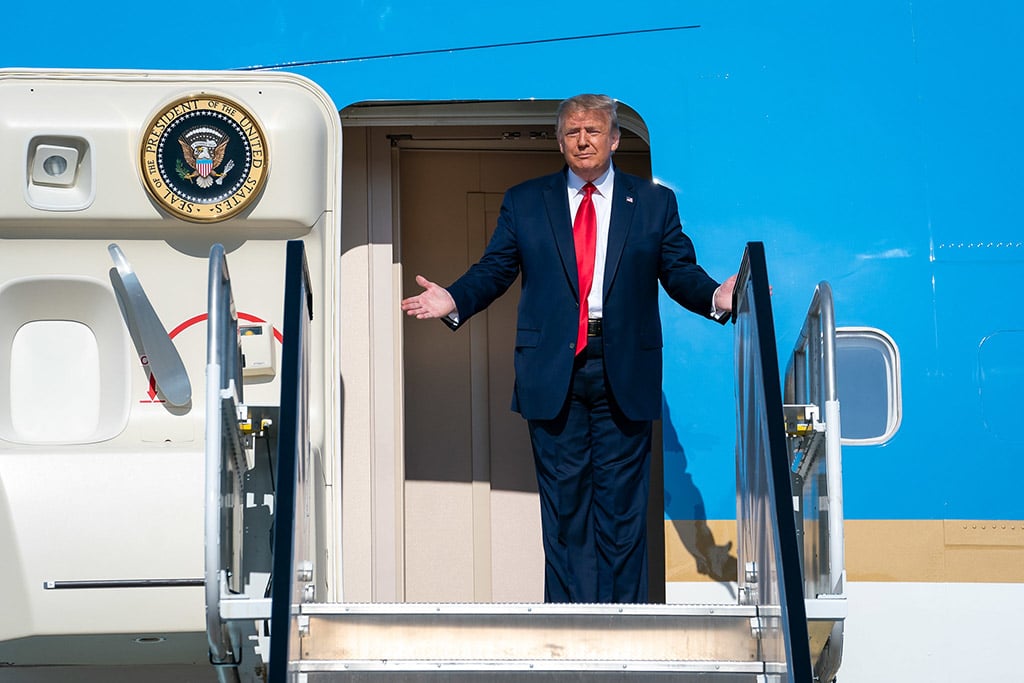
Trump probably did not expect to win in November 2016, but he undoubtedly tried and succeeded in a well-crafted campaign and it remains to be seen whether he can repeat the feat this coming November against the backdrop of the coronavirus crisis. An indication of his not being particularly confident, almost until the end, is his failure to put together a team to accompany him when he entered the White House. But once elected, his first priority was to be re-elected. This is no speculation. One of his first decisions on winning was to enlist as the Republican candidate in 2020. And in case anyone doubted it, for example, in the foreign policy arena, the man who used to be his National Security Advisor, John Bolton –who fell out with Trump, like so many others– states it in his recently-published and controversial (as far as the President is concerned) memoirs: ‘… I am hard-pressed to identify any significant Trump decision during my tenure that wasn’t driven by reelection calculations’. The working class play a significant role in the forthcoming election, at least as they are conceived by the incumbent. This is despite the fact that, in reality, Trump has done little for this segment of society, particularly in an area like medical insurance, which has taken on more importance with the current health, economic and social crisis, and could weigh against him. He has, however, paid attention to some of the preoccupations of this class.
Around 31% of Americans are generally considered working class (those who earn US$19,000-US$45,000 per annum) although there is also a lower class (27%), divided into the working poor (earning US$9,000-US$18,000) and the underclass. The majority of Americans, however, classify themselves as middle class –high, medium or low– and deem members of the working class to be blacks and Latinos. Also entering these considerations of political sociology is the dichotomy between the urban and rural sides of the country. The latter predominantly supports the current President, while the Democrats have increasingly focused on the larger cities, ignoring the rural vote. David Frum, in his recent book Trumpocalypse, argues that this ‘rural America’ is now overrepresented in American democracy (something that has occurred in England with Brexit and the most recent British elections, overwhelmingly won by Boris Johnson thanks again to the support of a section of the working class: curious parallels).
Trump is not working class, although sometimes he tries to appear so. But he knows his base is there and he cultivates it. He perceives this concept and its culture mainly in terms of a white man proud of being so, Christian, with low educational attainment, opposed to the social and economic ascent of women, impoverished or marooned for years by globalisation and automation in industry, anti-elite and anti-enlightenment (although he does not refer to it as such). His former campaign manager, Steven Bannon, used to refer to them affectionately as “hobbits” or “deplorables”, as Benjamin R. Teitelbaum points out in his excellent book, War for Eternity: The Return of Traditionalism and the Rise of the Populist Right. Based on a series of interesting interviews, this emphasises the importance of the working class for Trump, especially rural Christians. The expression “deplorables” was used by Hillary Clinton to refer to Trump-supporters: a serious error and lack of sensitivity that lost the Democratic presidential bid many votes in 2016. ‘I’m a “deplorable”’, was the response waved on placards.
The working class is a sector that the Democratic Party, obsessed with forging an ethnic rather than a social coalition, had been drifting away from for some time, but especially in recent years, despite historically relying on it as one of its bases, and is now trying to recover. The Democrats had supposedly focused on issues deemed ‘utopian’ by the working class, such as sexual equality, the acceptance of homosexuality, abortion, immigration reform, black civil rights, gun control and a series of positions on issues involving education, social security and law and order that do not sit well with the working class value system. In the 2018 elections, victorious Democratic candidates were ‘moderates’, opposed to abortion and gun control. The party is split into two wings: those who want to pursue matters to their final outcome (Alexandria Ocasio-Cortez) and those who want to find that coveted but elusive intermediate point (as Joe Biden aspires to do).
Trump fused together his protectionist, anti-globalisation and anti-immigration rhetoric and later policy, which he has been stoking, at the same time as defending the economic interests of the highest-echelon elite in the US. This is the origin of his emphasis on ‘America First’ and the ‘Make America Great Again’ slogan, and a good part of his erratic and contradictory policy towards China –currently the great advocate of preserving ‘traditional’ globalisation, but also geopolitical considerations, because it is the only true rival of the US–. There is resentment on the part of workers towards China due to the loss of jobs and the accusation that China had been exploiting and ‘raping’ the US, as well as deceiving farmers into thinking that they were going to obtain more for their exports.
Considerations involving the working class are mixed with religious factors. Trump is not personally religious, although he now tends to cultivate this facet. He can count on the fierce support of white evangelicals. Although it is not known if he will run again, they are represented by the vice-president, Mike Pence, someone who believes implicitly in the literal truth of ‘The Book’, as he refers to the Bible, including in international meetings. Another influential person in this respect is Mike Pompeo at the State Department.
And, of course, there is the race factor, which has exploded in recent weeks. The lot of the black population has improved over the last 20 years, but less than other sectors of society. Indeed, white families’ net worth in 2016-2018 was 10 times greater than that of black families, according to some studies, which has been reflected in a higher incidence of COVID-19 in the black community, and the subsequent resentment that boiled over with the killing of George Floyd at the hands of the police.
In the 2016 elections (despite the emergence of Trump, who did not consider them part of ‘his’ working class), black voter turnout with Hillary Clinton fell more than in the past 20 years, to 59.6% of eligible black voters, after attaining a record black turnout of 66.6% in 2012, according to a report from the Pew Center. Could Biden, who owes his definitive improvement in the Democratic primaries to the black vote, reclaim it? It is undoubtedly going to be decisive. Two thirds of black adults believe Trump has made race relations in the country worse. Linking the religious and the race themes, more Christians now say that black lives matter, but more than seven out of 10 white evangelical Protestants and white Roman Catholics believe that the police across the country are doing an ‘excellent’ or ‘good’ job in protecting people from crime. Fewer than half of black Protestants think the same way.
Trump remains loyal to the principles that took him to the White House. He is not an opportunist. He continues defending his ideas, some of which have been clearly exposed with the coronavirus crisis and his reactions to the widescale and sometimes violent protests against racism and police violence. His 2016 campaign, which was genuinely that of an insurgent, succeeded in mobilising voters who had stayed at home or voted for Obama in 2012. A study by Johns Hopkins University indicates that 28% of Trump voters in 2016 were Obama voters or eligible non-voters in 2012. In comparison, only 16% of Clinton voters had been Romney voters in 2012 or eligible non-voters in 2012. The voters who switched from Obama to Trump were disproportionately white and working class, while the non-voters in 2012 who voted in 2016 were disproportionately white. The report concludes that Trump’s appeal to the white working class was crucial to his victory.
Will the same thing work in November? Some promises remain unfulfilled and not only due to coronavirus. For example, the idea that companies would repatriate jobs to the US only came to fruition a year ago, after two years of Trump in the White House, around 145,000. Menial tasks are indeed returning –more so with the imbalances and failings in the global supply chains that have become evident– although often in an automated way. A good example is provided by the 2019 documentary American Factory (Netflix), from the Obamas’ production company, in which Chinese capital invests in Ohio only to end up, after cultural clashes, automating its output of windscreens.
All this is predicated on another possible, although increasingly unlikely, victory by the current tenant of the White House, involving once again winning not the popular vote but the electoral college. Courtesy of the working class and rural America.


